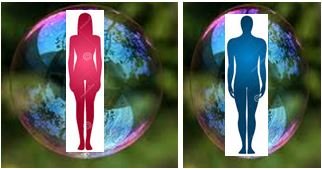What we should know: Tips-Body Language (Chap.2_Part 1)
In Chapter 1 of "What we should know: Tips-Body Language" we take a look at the world of non-verbal communication, which represents 55% of the total impact of a message - a significant percentage - and how important it is to know interpreting the corporal signals when maintaining a verbal communication, or when simply being a listener or observer; since in general, they are accompanied by body gestures, which will indicate or reveal the true postures, reactions and behaviors that we have before the subject in conversation.
This time we will talk a little about the territories and areas that each individual possesses and which is deeply linked to the spatial conditions from which he grew up, as well as his culture.
A look at the past: Territories
We all know that animals tend to delimit their space, their territories, and respond to the defensive against those who dare to invade it. And we humans are not very different as it seems, since a few years ago it was discovered that we also have these so-called "Personal Territories".
The American anthropologist Edward Hall was one of the pioneers in studying the spatial needs of men, creating in the early 60's the word "Proxemia", which means proximity or proximity; discovering that each individual has a defined space around our body. His associated studies in this field of proxemia allowed to improve both the understanding of one's own behaviors and those of others and to help predict the reactions that people had in face-to-face situations.
A territory is not only allusive to a country, regions, provinces, cities or streets; having in all cases, very well defined borders, where each inhabitant of the territory share something intangible, and they will defend it in full force if an external agent arrives to invade or attack it.
A territory also represents that space that a person considers his own, as if it were an extension of his body. Each one has its own personal territory which can encompass the surroundings of their possessions, as is the case of the house, the interior of the car, dormitory, among others.
As I mentioned earlier, all animals consider their own space around them, and the extension or otherwise of this space depends fundamentally on the conditions in which the animal was raised and the population density.
For example:
- A lion from some remote African region, could have a personal space of approximately 50 km radius according to the population density in the area.
- A lion raised in captivity with other lions, could have a personal space of a few meters, this as a direct consequence of a greater population density.
Based on this, we could say that those people raised in an extensive space with few people around, will require a larger personal space compared to those who were raised in a smaller space and with more people.
It is clear to us that each human being has its "air bubble", where its dimensions depend on the density of the population in its place of origin. However, the breadth of the personal zone is determined by the type of culture.

Source 1 | Source 2
I read somewhere that Japanese culture prefers proximity; that is, it has a small personal zonal distance. However, I totally disagree with this statement, since I am Japanese, and I particularly prefer distance. Hahahaha
In the next post we will talk about how that bubble is divided around us and what ranges of distance involve one type of zone to another.
Thank you very much for reading!!
See you in the next post !, with:
"Zone Distances"